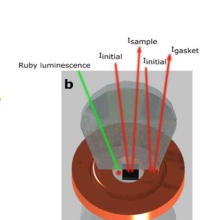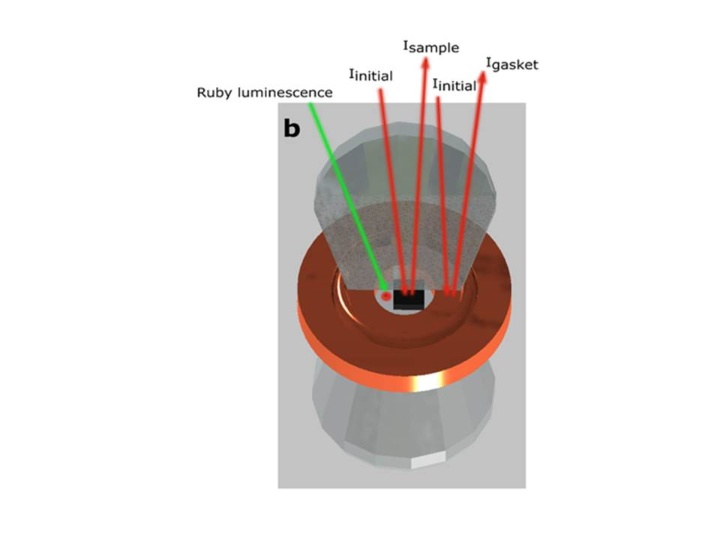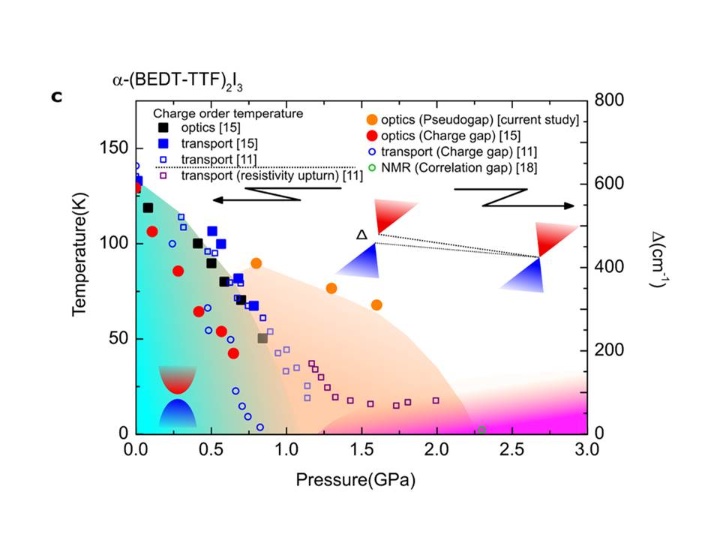Dirac fermions attract considerable interest for several years and tremendous efforts are devoted to unveil the Dirac/Weyl semimetallic state in real crystalline systems. The behavior of Dirac fermions under strong correlations and in the proximity of other ordered states is under particular scrutiny as robust experimental signatures are scarce. α-(BEDT-TTF)2I3 constitutes a superior model in this regard because the Dirac state occurs next to an electronically ordered ground state enabling us to investigate and deliberately vary the exotic properties in correlated Dirac fermions.
The charge-ordered insulator gradually evolves to a metal when pressure is applied, and at low temperatures the electronic bands form tilted Dirac-like cones. Here, we present systematic low-temperature infrared experiments on α-(BEDT-TTF)2I3 in an extended pressure range. A metallic state with a frequency-independent optical conductivity indicates the coexistence of the trivial and massless Dirac electrons. We discover the opening of an energy gap due to correlated Dirac fermions at the boundary to the insulating state; it is gradually suppressed when pressure increases.
The unique possibility of tuning the correlated Dirac state provides unprecedented insight into this novel electronic state and yields information relevant for Dirac electron systems in general.




